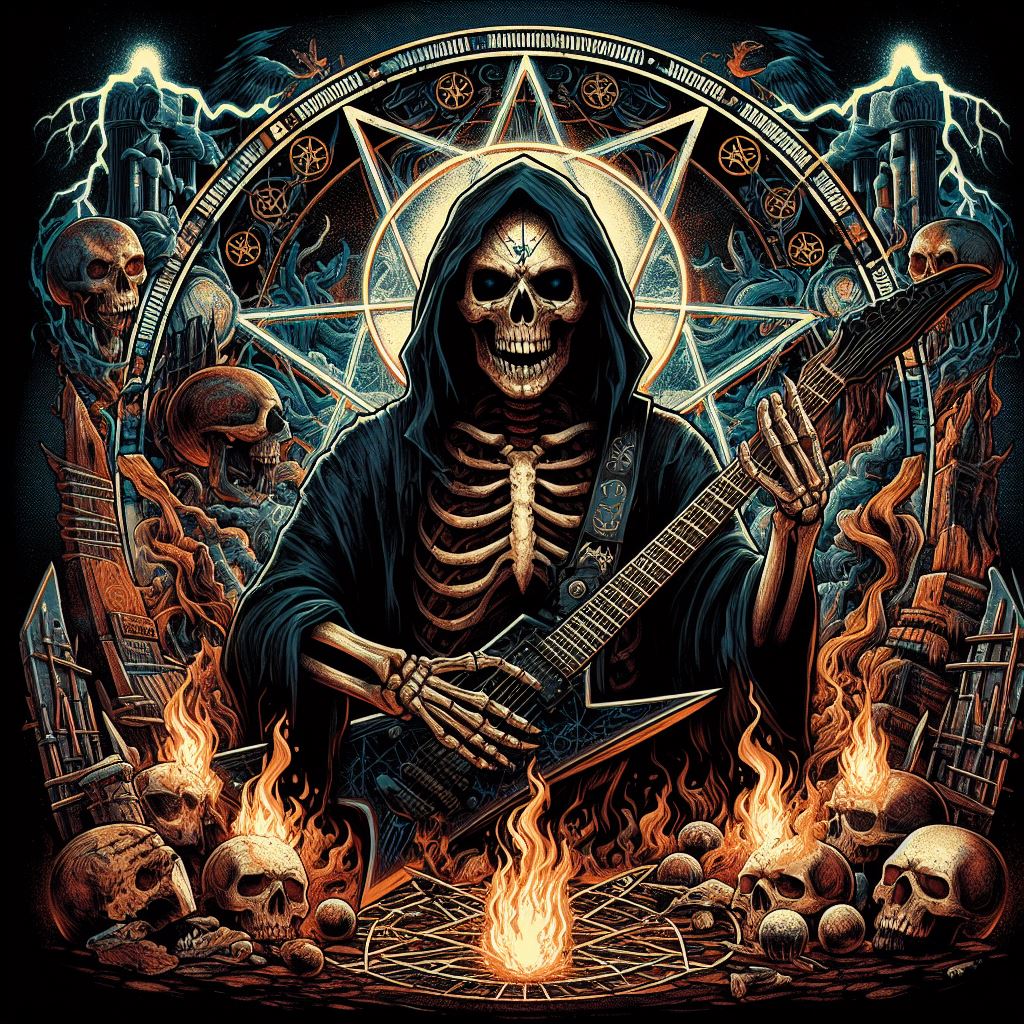Meshuggah, the Swedish word for “crazy,” is a fitting name for a band that has defied categorization in the metal scene for over three decades. Pioneering a sound that blends technical proficiency with jarring dissonance, they’ve become one of the most influential extreme metal acts of all time.
The band’s story begins in 1987 in Umeå, Sweden, a small town with a surprisingly active rock scene. Jens Kidman (vocals/guitar) and Fredrik Thordendal (guitar) formed the core, initially experimenting with thrash metal under the name Metallien. After disbanding and reforming with a new lineup, including bassist Peter Nordin and drummer Niklas Lundgren, they adopted the “Meshuggah” moniker and released their debut EP, “Psykisk Testbild” (Psychological Test Image), in 1989.
This early period saw Meshuggah exploring a death metal sound, evident in tracks like “Jernvasen” (The Iron Vase). However, the seeds of their future style were already present. The complex song structures and use of odd time signatures hinted at a band yearning to push boundaries.
A turning point came with the departure of Kidman and the formation of Calipash, a short-lived project that reunited him with Thordendal. When they decided to revive Meshuggah, they brought in drummer Tomas Haake, whose inhuman drumming would become a cornerstone of the band’s sound. 1991’s “God is an Industrial Landscape” showcased this evolution. The album remained rooted in death metal but displayed a newfound focus on intricate rhythms and a more technical approach.
“Destroy Erase Improve” (1995) marked a significant leap forward. Here, Meshuggah truly embraced the polyrhythms and polymeters that would become their signature. Tracks like “Humiliation” and “Denounce the Light” featured unconventional time signatures like 8/8 and 4/7, seamlessly interwoven with Haake’s unconventional drumming style.
The complexity didn’t come at the expense of groove. Meshuggah’s riffs, often built on Fredrik Thordendal’s innovative use of eight-string guitars, were undeniably catchy despite their odd structures. This unique blend of technicality and head-bobbing rhythm earned them a dedicated following within the metal underground.
The late 90s saw Meshuggah refine their sound further. 1998’s masterpiece, “Chaosphere,” remains a landmark album. Tracks like “Straws Pulled at Random” and “In Death – Is Life” showcased their ability to write intricate yet brutal music with a distinct sonic identity. This period also saw the band’s first forays into what would later be termed “djent,” a guitar technique characterized by a scooped palm-muted sound that became synonymous with Meshuggah.
The new millennium brought continued success. Albums like “Nothing” (2002) and “Catch Thirtythree” (2004) solidified their reputation as metal innovators. They garnered critical acclaim and a growing fanbase beyond the metal scene, influencing bands across various genres.
The band’s lineup remained relatively stable throughout their career, with the exception of the bass position. After Peter Nordin’s departure, Meshuggah cycled through several bassists before settling on Dick Lövgren in 2004. This lineup has remained constant ever since, a testament to the band’s tight musical bond.
Meshuggah continues to push boundaries. Their latest album, “Immutable” (2022), demonstrates their unwavering commitment to sonic exploration.
Meshuggah’s legacy is undeniable. They’ve carved a unique path in metal, inspiring countless musicians and pushing the boundaries of what the genre can achieve. Their music is a testament to the power of innovation and the endless possibilities of heavy music.

Leave a Reply
You must be logged in to post a comment.